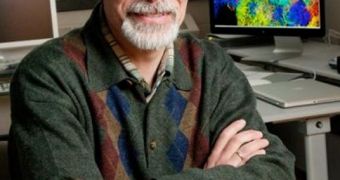A paper published in the latest issue of the peer-reviewed journal PLoS ONE suggests that the “RNA world” hypothesis explaining the early evolution of life here on Earth may be incorrect. The idea was first suggested back in 1986, but new evidence is currently working against it.
The issue at hand is how the ribosome evolved. This cellular organelle is the workbench for building proteins, and it was until now thought that ribonucleic acids (RNA) set its foundations at first.
To this day, RNA remain some of the most critically-important molecules in any cell. But when life first appeared, these acids were responsible for recruiting various components in their environment in order to piece the ribosome together.
Once this happened, proteins began being produced, and life was allowed to develop further. At least, this is how the RNA world theory suggests things occurred. But the new analysis finds that proteins interacted with RNA long before the emergence of the actual ribosome.
The results of this study are all the more surprising, since the former hypothesis has been confirmed constantly over the past 25 years. The RNA world idea holds that the earliest forms of molecular evolution were based on RNA, and that proteins and deoxyribonucleic acid (DNA) developed later on.
The investigation was led by Gustavo Caetano-Anollés, who is a professor of crop sciences at the University of Illinois Institute for Genomic Biology. “I'm convinced that the RNA world (hypothesis) is not correct,” he explains.
“That world of nucleic acids could not have existed if not tethered to proteins,” the scientist adds. He says that the ribonucleoprotein machine (ribosome) is an extremely complex construct, in which up to 80 different proteins interact with multiple types of RNA molecules.
This assemblage must have therefore been put together through a long and complex process of co-evolution. “You can't get RNA to perform the molecular function of protein synthesis that is necessary for the cell by itself,” Caetano-Anollés argues.
He goes on to say that the RNA world hypothesis makes use of a number of assumptions that have no scientific support or evidence. One of these assumptions is that the peptidyl transferase center (PTC) active site is the oldest in the ribosome.
“If the evolutionary build-up of ribosomal proteins and RNA and the interactions between them occurred gradually, step-by-step, the origin of the ribosome cannot be the product of an RNA world,” the team leader says, quoted by Astrobiology Magazine.
“Instead, it must be the product of a ribonucleoprotein world, an ancient world that resembles our own. It appears the basic building blocks of the machinery of the cell have always been the same from the beginning of life to the present: evolving and interacting proteins and RNA molecules,” he concludes.

 14 DAY TRIAL //
14 DAY TRIAL //